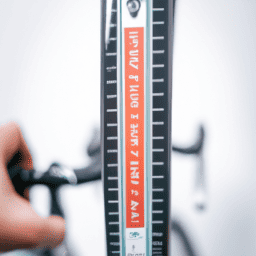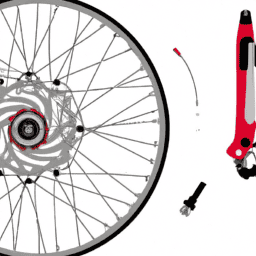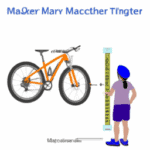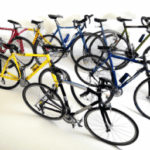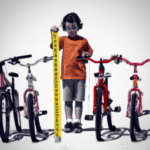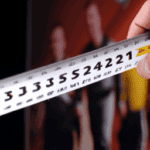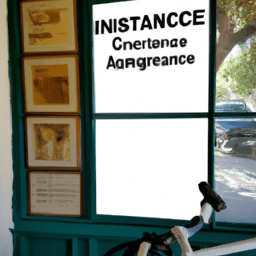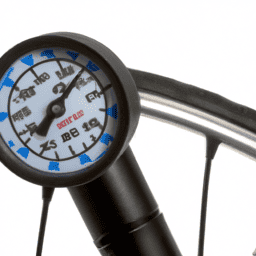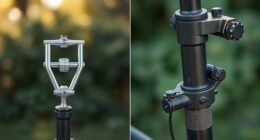Having been a passionate cyclist for more than ten years, I confidently assert that selecting the appropriate bicycle is essential for a pleasurable and secure cycling experience.
However, with so many options available, it can be overwhelming to determine how much bicycle you really need.
First and foremost, it’s important to assess your riding needs. Are you planning on using your bike for commuting, leisurely rides, or intense training? Do you plan on riding on city streets or off-road trails? These factors will help determine the type of bike that is best suited for you.
From there, it’s important to consider the bike’s accessories, fit, and maintenance to ensure that you get the most out of your investment.
In this article, we’ll dive into each of these areas in detail to help you make an informed decision when it comes to purchasing your next bike.
Key Takeaways
- Assess your riding needs to determine the type of bike that is best suited for you, considering factors such as terrain and frequency of use.
- Proper bike fit is crucial for comfort and preventing injury, including adjusting seat height and handlebar distance.
- Regular bike maintenance, such as cleaning and adjusting gears, is important for ensuring safety and longevity of your bike.
- Safety should always be a top priority, including wearing essential safety gear like a helmet and lights, and taking measures to prevent accidents.
Determine Your Riding Needs
You’ll need to figure out how much you’ll be riding and what type of terrain you’ll be on to determine your riding needs. If you plan to use your bike primarily for commuting, you may want a more lightweight and efficient bike that can handle smooth roads and bike paths.
On the other hand, if you’re looking to use your bike for leisure, you may want a bike that can handle a variety of terrains, such as a mountain bike for off-road trails or a hybrid bike for more versatility. When it comes to choosing between a road bike and a mountain bike, it really depends on the type of riding you’ll be doing.
Road bikes are best for smooth, paved roads and offer speed and efficiency. Mountain bikes, on the other hand, are designed for off-road terrain and can handle rougher terrain, such as rocks and bumps. Consider your riding needs and the type of terrain you’ll be on before deciding on the best bike for you.
With these factors in mind, you can choose the right bike type that will meet your riding needs and provide you with a comfortable, enjoyable ride.
Choose the Right Bike Type
Don’t miss out on finding the perfect bike type that fits your style and needs! When choosing the right bike type, it’s important to consider the terrain you’ll be riding on, the distance you’ll be traveling, and your riding style.
Here are some pros and cons of the two most popular bike types:
-
Mountain bikes are designed for off-road terrain, featuring thick, knobby tires and a sturdy frame. They offer excellent shock absorption and stability, making them ideal for rough terrain. However, they can be heavier and slower than other bike types, which can be a disadvantage if you’re looking to ride on paved roads.
-
Road bikes are designed for speed and efficiency on paved surfaces. They feature narrow, smooth tires and a lightweight frame, allowing you to travel long distances quickly. However, they offer little shock absorption and can be uncomfortable on rough terrain.
When it comes to choosing between hybrid and cruiser bikes, it’s important to consider your riding needs:
-
Hybrid bikes are a combination of road and mountain bikes, offering the best of both worlds. They feature wider tires for stability on rough terrain and a lightweight frame for speed on paved roads. They’re perfect for commuting, recreational riding, and light off-road riding.
-
Cruiser bikes are designed for comfort and style, featuring wide, padded seats and upright handlebars. They’re great for leisurely rides around the neighborhood or along the beach. However, they’re not ideal for long distance or off-road riding.
Now that you have a better understanding of the different bike types, it’s time to select the right bike accessories to enhance your riding experience.
Select the Right Bike Accessories
Like a chef adding spices to a dish, selecting the right bike accessories can enhance your riding experience and make it more enjoyable. Accessorizing for style is a fun way to personalize your bike and show off your personality. From colorful handlebar tape to custom water bottle holders, there are countless ways to add some flair to your ride. However, it’s important to remember that safety should always come first. Essential safety gear, like a helmet and lights, should never be skipped, no matter how stylish your bike may look.
To ensure that you have all the necessary gear, it’s helpful to create a checklist before heading out on a ride. This table outlines the essential safety gear that every rider should have:
| Essential Safety Gear | Purpose |
|---|---|
| Helmet | Protects your head in case of a fall |
| Lights | Makes you visible to cars and pedestrians |
| Reflective gear | Increases visibility in low-light conditions |
Remember, accessorizing can be a fun way to personalize your bike and add some flair to your ride, but safety should always be your top priority. With the right gear, you can ride confidently and enjoyably. As you continue to enhance your riding experience, it’s important to also find the right fit for your bike.
Find the Right Fit
Achieving maximum comfort while riding your bike is crucial, and finding the right fit is key to avoiding discomfort and injury. Adjusting your posture is one of the most important aspects of finding the right fit. Proper posture not only reduces the strain on your body, but it also allows you to ride your bike more efficiently.
To achieve the best posture, adjust your seat height so that your knee is slightly bent when your foot is on the pedal. Make sure your handlebars are at a comfortable height and distance from your body. This will help you maintain a natural, relaxed position while riding.
Measuring your inseam is another important step in finding the right fit. Your inseam is the measurement from the bottom of your foot to the top of your thigh. This measurement is important because it determines the ideal size of your bike frame. A bike frame that is too small or too large can cause discomfort and make it difficult to ride.
To measure your inseam, stand with your back against a wall and place a book between your legs, with the spine against your crotch. Measure the distance from the top of the book to the floor. This measurement will help you determine the appropriate bike frame size for your body.
Now that you know how to find the right fit for your bike, it’s important to maintain your bike to ensure it stays in good condition.
Maintain Your Bike
Keeping your ride in top-notch condition is the key to avoiding a potential disaster on the road, so make sure to regularly check and maintain your bike.
One essential maintenance task is bike cleaning. Dirt, grime, and debris can accumulate on your bike, which can cause damage over time. Use a mild detergent and water to clean your bike thoroughly. Make sure to avoid using high-pressure water, which can damage your bike’s components. After cleaning, dry your bike with a soft, clean cloth and lubricate the chain to prevent rust.
Another important aspect of bike maintenance is gear tuning. Poorly adjusted gears can cause unnecessary wear on your bike’s components, leading to costly repairs down the line.
To tune your gears, start by inspecting your cables and shifters for wear and tear. Next, adjust your limit screws to ensure that your gears are shifting smoothly and accurately. Finally, fine-tune your derailleur to ensure that your gears are shifting seamlessly.
With proper gear tuning, you’ll be able to enjoy a smoother, more efficient ride.
Frequently Asked Questions
What is the best type of tire for my bicycle?
I prefer tubeless tires for my bicycle as they offer a smoother ride and reduce the risk of punctures. However, inner tubes are cheaper and easier to replace. The best tire brands vary based on riding style, but some popular options include Continental, Schwalbe, and Maxxis. Consider factors such as tread pattern, width, and durability when selecting the best tire for your needs.
Can I use a mountain bike for road cycling?
Oh, sure, I’ll just take my mountain bike on a leisurely road ride. Because who needs the efficiency and speed of a road bike? Not me, apparently. Mountain bikes have their advantages but for road cycling, stick with a road bike.
How often should I replace my bike chain?
I should replace my bike chain every 2,000-3,000 miles or if it shows signs of wear. Proper chain maintenance includes regular cleaning and lubrication, which can extend the chain’s lifespan.
Is it necessary to wear a helmet while riding a bicycle?
Yes, it’s necessary to wear a helmet while cycling. Helmet safety is crucial and mandatory in many places by cycling laws. Helmets protect the head from injuries and reduce the risk of fatal accidents.
What is the recommended pressure for my bike tires?
Last week, my tire pressure was too low and caused me to struggle to pedal. Bike tire maintenance is crucial to ensure a smooth ride. Checking tire pressure regularly is recommended, with most road tires requiring 80-130 PSI.
Conclusion
Well, that’s all there’s to it! Finding the right bicycle for your needs may seem daunting at first, but with a little research and consideration, you’ll be cruising down the road in no time.
Remember, it’s important to determine your riding needs and select the right bike type accordingly. Don’t forget to accessorize with necessary gear, and always strive for a proper fit to avoid discomfort and injury.
Maintaining your bike is crucial for its longevity and performance. Keep up with regular maintenance and repairs to ensure your bike stays in top shape.
In the end, the amount you spend on a bicycle should reflect your riding needs and level of commitment. So go ahead, hit the open road, and enjoy the ride!
